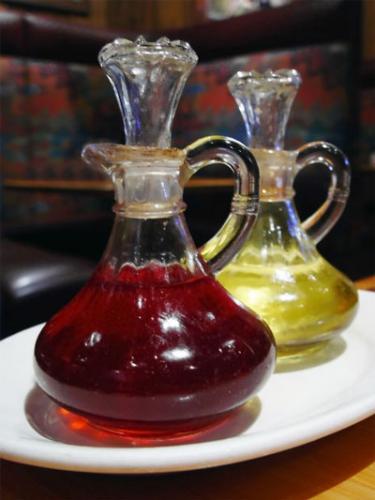Red and white vinegar cooking and household uses
Red and white vinegars have an abundance of uses for not only cooking, but also around the house.
Vinegar has been around for as far back as 5000 B.C. The Food and Drug Administration (FDA) defines vinegar as a product that contains at least four grams of acetic acid per 100 milliliters.
5000 B.C. The Food and Drug Administration (FDA) defines vinegar as a product that contains at least four grams of acetic acid per 100 milliliters.
Vinegar’s tart taste results from the acetic acid it contains; which is also believed to be responsible for some of vinegar’s health benefits, such as heart health benefits – including hypertension, and helping to control blood sugar in individuals with Type 2 diabetes.
Those with Type 2 diabetes have a resistance to insulin which causes them to experience high blood sugar levels. Results from a 2010 Arizona State University research study conducted by Dr. Carol Johnston reported that “studies suggest that dietary vinegar may enhance the body’s ability to absorb bone building calcium.” Michigan State University Extension reminds that it is important to consult your health care provider prior to using vinegar for dietary consumption.
From a nutrition standpoint, red vinegar is low in calories, fat, sodium and carbohydrates and many are also gluten free.
Red vinegar is the common name for any vinegar with a red hue:
- Red wine vinegar
- Balsamic vinegar
- Apple cider vinegar
It’s added to enhance taste to a variety of dishes:
- Dressings
- Salads
- Meat and seafood marinades and rubs
- Add a small amount to smoothies
Red cider vinegar household uses:
- To detoxify and soften skin, combine and add to a full bath: Two tablespoons apple cider vinegar, half-cup sea salt, one cup Epson salts, three ounces lavender oil.
- Dab onto scalp with a saturated cotton ball to cleanse ethnic hair styles, such as dreadlocks, twists, braids and other elegant and elaborate hairstyles. Apply to scalp at the parts, and then rinse with tepid water. Add pure lanolin to hair, towel wrap.
- Heals sun burns.
- Dilute on cotton ball and use for a facial toner.
White vinegar has several uses around the house from cooking to cleaning, to outdoor use.
White vinegar cooking uses:
- If you like and can tolerate spicy hot sauces, place three to four peppers and a half-cup onion to one-cup white vinegar in a sealed container. Refrigerate for 24 to 48 hours. Use to top dishes and/or add to recipes for a fiery hot sauce.
- Keep boiled eggs from cracking by adding a tablespoon of white vinegar to cooking water.
- Add a teaspoon to cake mixes to moisten your cakes.
White vinegar household uses:
- Remove odors from cooking or other household odors throughout the house by sitting one to two ounce containers of white vinegar around the house.
- Remove fish odors by adding a couple drops of white vinegar to raw fish before cooking.
- Remove fish odors from fingers/hands by rubbing them with white vinegar and then rinsing hands with water.
- Remove yellowing stains from shirt collars and underarms by spraying the areas with white vinegar, allowing to pre-soak for 24 hours prior to laundering in cold water (hot water sets stains).



 Print
Print Email
Email



